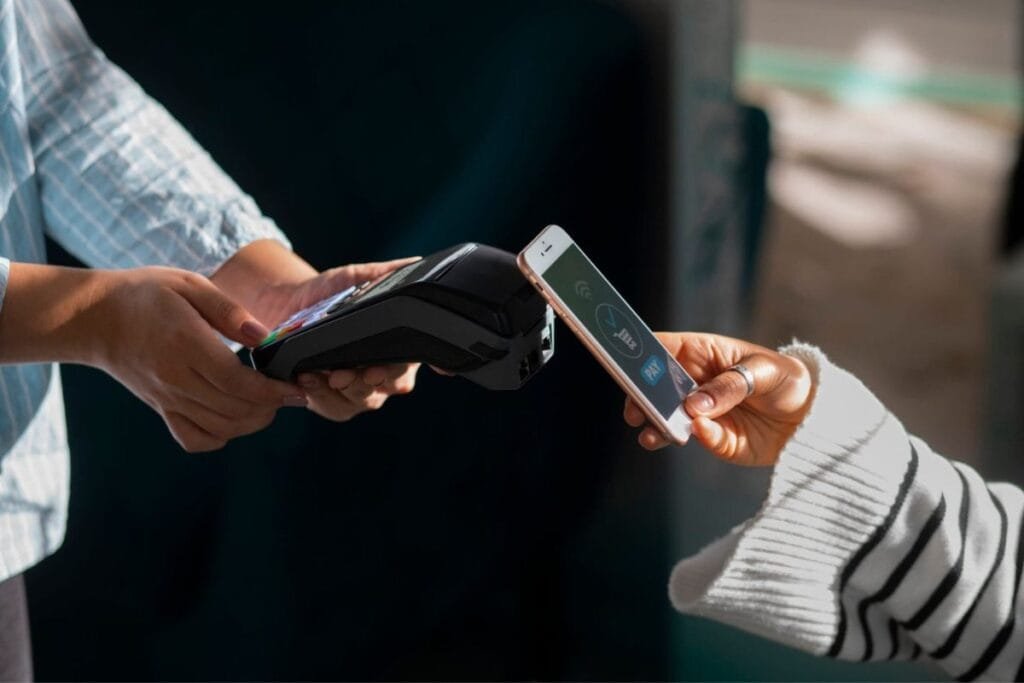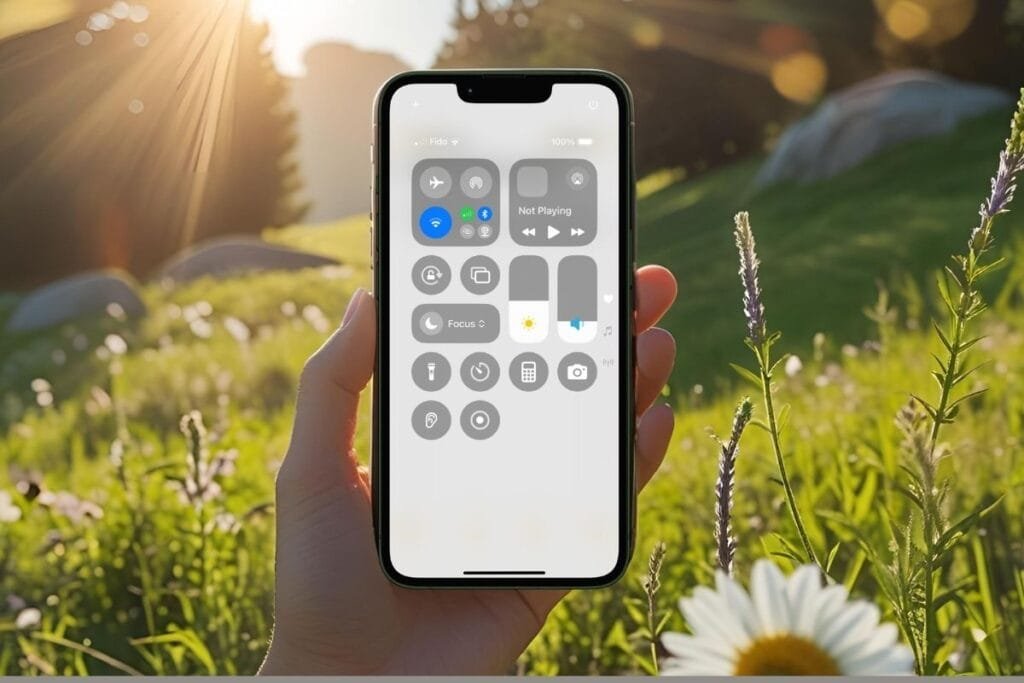Apple’s added Screen Sharing and Screen Control to the FaceTime app, making it possible to see someone’s screen — and, with their permission, even take control of it. So instead of explaining every step, you can simply show them what to do.
If you’ve ever tried helping someone fix their iPhone or iPad over the phone, you know how it goes. You say, “Tap Settings,” and they say, “I don’t see it!” — and suddenly it turns into a guessing game.
When my mom was with us, I spent plenty of time trying to help her this way. I would have loved this feature back then — it would’ve made helping her so much easier and less stressful for both of us.
Let’s take a closer look at how Screen Sharing and Screen Control work and how you can use them to make helping friends and family a whole lot simpler.
What is Screen Sharing and Screen Control in the FaceTime App?
Apple’s FaceTime app has always been a great way to stay connected — whether it’s chatting with friends, catching up with family, or helping someone with their iPhone or iPad. But iOS 18 takes one step further with Screen Sharing and Screen Control.
Screen Sharing lets you see what’s happening on someone else’s screen during a FaceTime call. You can follow along as they open apps, scroll through Settings, or try to find a feature you’re explaining.
Screen Control takes that a step further. With their permission, you can actually take control of their screen — tapping, swiping, and navigating just like you would on your own device.
It’s a simple, secure way to show instead of tell — perfect for walking someone through a tricky setting, helping them back up photos, or showing how to use a new feature.
How to Use Screen Sharing and Screen Control in the FaceTime App
Here’s how to use the FaceTime app to share — and even take control of — someone’s screen so you can guide them through a problem or show them something new.
Step 1: Start a FaceTime Call
Open the FaceTime app and start a call with the person you want to help. Make sure you both have iOS 18 at a minimum to use this feature.
Step 2: Start Screen Sharing
On your device, tap the Share button, (it looks like a little screen with a person in front of it). You’ll see two options — Share My Screen or Ask to Share.
- Tap Ask to Share if you want to see their screen. They’ll get a pop-up asking to Share or Not Now to your request before anything is shared.
- Tap Share My Screen if you want to show your screen to the other person.

💡 Quick Tip: What’s That “Tap and Draw” Thing?
When you start Screen Sharing in the FaceTime app, you might see a little Tap and Draw window pop up — and yes, it can be a bit confusing at first!
This tool lets you point or draw on the screen while sharing, so you can show someone exactly where to tap. You can use your finger or Apple Pencil (on iPad) to circle or underline things as you talk.
If it’s sitting right in the middle of your screen (which it often is), just drag it to the edge so it’s out of the way. You can move it around anytime during your call.

Step 3: Request Screen Control
Once their screen is visible, you can now tap Request Control button at the bottom right-hand corner (looks like finger touching a screen).

They’ll see a message asking if they want to allow you to control their screen. You may also see a warning asking if you know the person who wants to use remote control to gain to access your device.

They must tap Allow before you can do anything — this keeps everything secure and ensures they stay in charge.
Step 4: Show, Don’t Tell
Now comes the fun part! You can:
- Tap or swipe to show them what to do
- Open apps or adjust settings
- Point out features or options directly on their screen
They’ll see everything you’re doing in real time and can stop sharing whenever they want.
Step 5: End Screen Control and Screen Sharing
When you’re done helping and no longer need Screen control they can tap Stop at the bottom of their screen.

This will end the Screen Control but the Screen Sharing is still in place. You’ll need to end the call completely to end the Screen Sharing.
The video below will let you see the steps in action.
This feature makes helping so much easier, but it’s important to know the limits and safeguards Apple put in place to keep everything safe.
Staying safe while using Screen Sharing and Screen Control in the FaceTime App
One of the things I love about the FaceTime app Screen Sharing and Screen Control features is how much Apple has thought about safety. If you’ve ever worried about “what could they see?” or “can they mess up my iPhone?” — this section will put your mind at ease.
What the person controlling your screen can do
When you give someone permission, here’s what they can actually do:
- Tap, swipe, and navigate around your screen — basically, help you as if they were holding your iPhone.
- Type using the on-screen keyboard.
- Open and close apps to get to the part you need help with.
- Adjust some settings to fix a problem or show you a feature.
So yes, they can really guide you step-by-step, but only in ways that are helpful.
What the person controlling your screen cannot do
Apple made sure that even while someone has control, your private stuff stays private. They cannot:
- See your messages, notifications, or other personal info.
- Buy anything or access your Apple ID.
- Erase your device or reset it to factory settings.
- Change your Face ID, Touch ID, or Screen Time settings.
Basically, they can help you get things done, but they cannot mess with your personal data or privacy.

Extra safety features
- You’re always in charge. You must tap Allow for someone to control your screen, and you can stop it at any time.
- Temporary access only. Control ends when you stop sharing or hang up the call.
- No sneaky background access. They can only interact while the FaceTime call is live.
So, while this feature is super powerful, Apple built it in a way that keeps you safe — and gives you the confidence to let someone help without stress.
Wrap-Up: Helping family using the FaceTime App has never been easier
With Screen Sharing and Screen Control in the FaceTime app, helping your family or friends with their iPhone doesn’t have to be stressful. You can see what they see, guide them step-by-step, and even take control — all while staying secure and keeping their privacy intact.
I know from years in tech support that sometimes even small tasks can feel impossible over the phone. This feature takes away the guesswork and makes helping someone not just easier, but actually enjoyable.
So next time a loved one calls with a question or tech hiccup, fire up FaceTime, share their screen, and show them exactly what to do. You’ll be amazed at how much simpler it is — and how grateful they’ll be for your help.
Related Posts
If you loved learning about Screen Sharing and Screen Control, you might also enjoy these posts:
5 Hidden Features in the FaceTime App You’re Going to Love
Discover clever tricks and little-known tools that make your FaceTime calls easier, more fun, and more productive.
Unique iPhone Accessories You Didn’t Know You Needed
From practical gadgets to fun add-ons, these iPhone accessories can make your device even more useful — and a few are perfect for gifting too.
If you’ve enjoyed this post, stick around! I share new iPhone guides, tricks, and step-by-step tips every week. Subscribe below and follow me on Facebook and Instagram so you never miss out.

Gail Kerr
IT Professional and Technical WriterTechnology has been a part of my life for as long as I can remember. I have over 27 years of experience providing computer support in large corporations and small businesses. I went back to school in 2009 to get an Associate Certificate in Technical Writing so I could take my love of tech and become proficient at writing clear and easy to understand documents for people of all levels. I’ve become the go to person for family and friends whenever they have tech questions or challenges.









